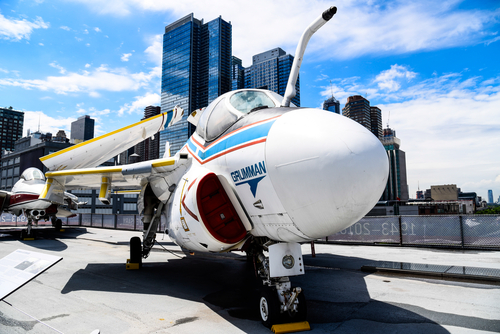
The Grumman A-6 Intruder was a true workhorse of American naval aviation from the jungles of Vietnam to the deserts of the Middle East.

With its inception rooted in the lessons learned from the Korean War, the A-6 Intruder materialized from a 1957 Navy specification for a new attack airplane, with Grumman’s design ultimately winning the bid.

By February 1963, the A-6A Intruders were officially in service with the U.S. Navy, marking the beginning of an era that would see the aircraft evolve through variants including the A-6E, specialized for electronic warfare, and the KA-6D, for aerial refueling.

The Intruder’s operational history is as storied as its design was innovative. One remarkable episode occurred on April 18, 1966, when a pair of A-6 Intruders launched from the USS Kitty Hawk under the cover of darkness and radio silence, successfully striking the Uong Bi powerplant in North Vietnam.

This mission exemplified the Intruder’s capability to execute precision strikes in adverse conditions—capabilities that were initially underestimated by the enemy, evidenced by the North Vietnamese mistaking the Intruder’s work for B-52 bombers.

Despite the sophisticated technology, such as the Digital Integrated Attack and Navigation Equipment (DIANE) and later the Target Recognition Attack Multisensor (TRAM), the A-6’s combat service in Vietnam was not without hardship.

Early loss rates were steep due to mechanical failures, inexperienced pilots, and enemy actions. Nevertheless, acts of heroism like that of Lieutenant Brian Westin, who saved his pilot after their Intruder was hit, showcased the bravery and skill of the aircraft’s crews.

The Intruder’s success in Vietnam led to its continued use through subsequent conflicts. It played a crucial role during Operation Desert Storm in 1991, where A-6Es equipped with TRAM were responsible for the majority of laser designations and laser-guided bomb drops, proving its worth as a first-rate all-weather attack bomber.

The capability to deliver ordnance precisely under zero-visibility conditions made the A-6 an indispensable asset for the U.S. Navy and Marine Corps.

Despite its retirement in 1997, the legacy of the A-6 Intruder endures. It served as a pathfinder for other aircraft, thanks to its integrated electronic display which provided crucial navigational and targeting information to aircrews.

Its robust design, including a plump fuselage housing two turbojet engines and the ability to carry up to 18,000 pounds of ordnance, made it a formidable tool in the U.S. military’s arsenal.

The endurance of the A-6’s design is also noteworthy. It remained in production from the late 1950s until 1993, a testament to its effectiveness and adaptability.

However, as military technology advanced and the dynamics of warfare evolved, the A-6 was eventually replaced by newer platforms like the F/A-18 Hornet.

The Intruder’s impact on military aviation is indelible; it was an aircraft that could operate where others couldn’t—under the shroud of night or the worst of weather—delivering strikes with pinpoint accuracy.

The A-6 Intruder’s storied career reflects the relentless advancement of military technology and the unyielding spirit of the aviators who flew it into the annals of history.

